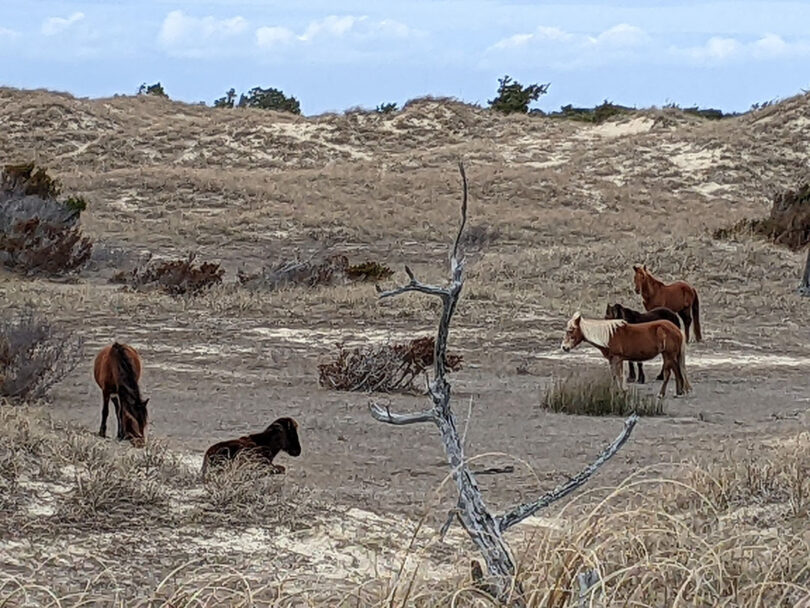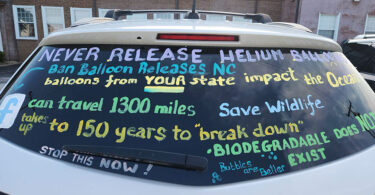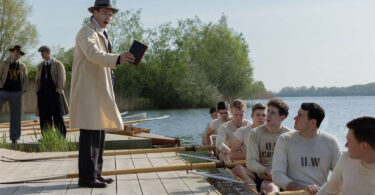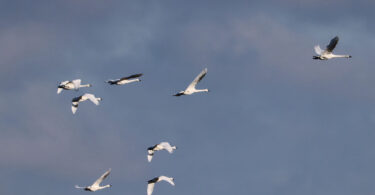Photo by Robbie Breitweiser
Robbie Breitweiser
With summer approaching, it was a bitter pill to have work responsibilities scuttle my plan for one last pre-Memorial Day backpacking trip to Shackleford Banks. The off-season is ideal for coastal camping, but with preparation and a little luck you can make a go of it year-round. This past winter and spring were fickle anyway, with lots of rainy weekends and inhospitable overnight lows, so I expect to be lured down a time or two in the coming months. If you think you might be as well, here are a few tips to consider regarding gear, safety, and comfort.
When camping near one’s vehicle or hiking a short enough distance to bring a cart, economizing on gear isn’t important; otherwise, be selective about what you carry. A reasonably lightweight tent is essential, as is a good sleeping pad or air mattress, and I always bring a sleeping bag though it might not be necessary on the warmest nights.
Water and food are obvious necessities; I can get by on about two liters per day, stuck in the side pockets of my pack. For the first half of the trip I drink from a chilled plastic bottle that I can crush and stow with my trash when it’s empty, and then switch over to an insulated steel bottle loaded with ice that stays nice and cold. In terms of food, I carry a lunch bag with a reusable ice block in my pack, and fill it with simple, pre-prepared, high-calorie items. When the food’s gone I replace it with trash and gear to conserve space.
Preparing a meal at the beach sounds fun, until you discover how little sand it takes to render food basically inedible. I once went 4WD camping on Core Banks with a buddy and tried to warn him when he put a cooking grate across our campfire and pulled some steaks from the refrigerator of his fancy new Bronco; after grilling, he ate about three bites out of stubbornness before giving up. If the wind is low enough to even attempt cooking, you may have another problem to deal with anyway.
Flying insects can turn summer beach camping into an ordeal. When the wind drops below 5 mph or so, look out, especially near dawn or dusk. Mosquitoes and horseflies are plentiful, but the worst are the midges, AKA “no-see-ums.”
These tiny (as small as .5mm long) biting flies can form veritable clouds, getting in your mouth and hair and sticking to the sweat on your skin. When they show up, all you can do is try to get away, even into the water, and it rarely works. Repellents have limited effectiveness against them, but I carry DEET (which is nasty) and picaridin (not as strong but applicable to gear and clothes) for such situations.
When exploring grassy areas or maritime forests, be sure to use repellent because of chiggers and ticks. Everyone hates chigger bites, but tick-borne illnesses can be severe and debilitating, such as Lyme Disease, Rocky Mountain spotted fever, and a newer one called alpha-gal that causes anaphylactic shock after eating meat or dairy products.
Check yourself thoroughly and regularly and remove all ticks immediately. They emerged early this year, as I can attest after being bitten by several tiny nymph (“seed”) ticks during a mid-March trip to Shackleford, requiring blood tests and a prophylactic course of antibiotics.
If you can’t carry a sun shelter or umbrella of some sort, bring a wide-brimmed hat and use sunscreen if it’s too hot to cover up. Sunburn can happen quickly on bright summer days, and the sand and water reflect UV rays. Staying hydrated is also key to avoiding heat exhaustion, which can result in heat stroke if untreated.
Dune prickly pear is a vicious little cactus with long spines that can ruin your day if you wander off the beach barefoot or in sandals. Bring suitable footwear, and keep dogs leashed and away from dunes and grassy areas. Build any campfires on the beach, below the high water mark.
If you’re wading, shuffle your feet to avoid stepping on a stingray. Remember that dead jellyfish can still sting when washed up on the beach. Shark attacks, while rare, do occur; avoid swimming alone, at dawn or dusk, or wearing shiny objects. Stay close to shore, avoid steep drop-offs and areas between sandbars, and stay away from schools of baitfish and diving seabirds.
And finally, thunderstorms: check weather forecasts and remember that a tent offers zero protection against lightning. Avoid elevated or open areas, isolated trees, tall or open structures, and bodies of water. Get in a hard-top vehicle and roll up the windows, if possible. If not, crouch but do not lie down. Consider praying.
That about covers the pitfalls to avoid, so back to gear–bring a flashlight, plus a beacon or headlamp to mark your campsite, especially on dark nights. A power bank can be useful for recharging lights, phones, and other electronic devices. A small first-aid kit takes very little space and could come in handy. The rest is discretionary; fishing tackle, binoculars, a kite, or just a good book might round out your kit. The important thing is to have fun, stay safe and take good care of our public lands. Cheers!







